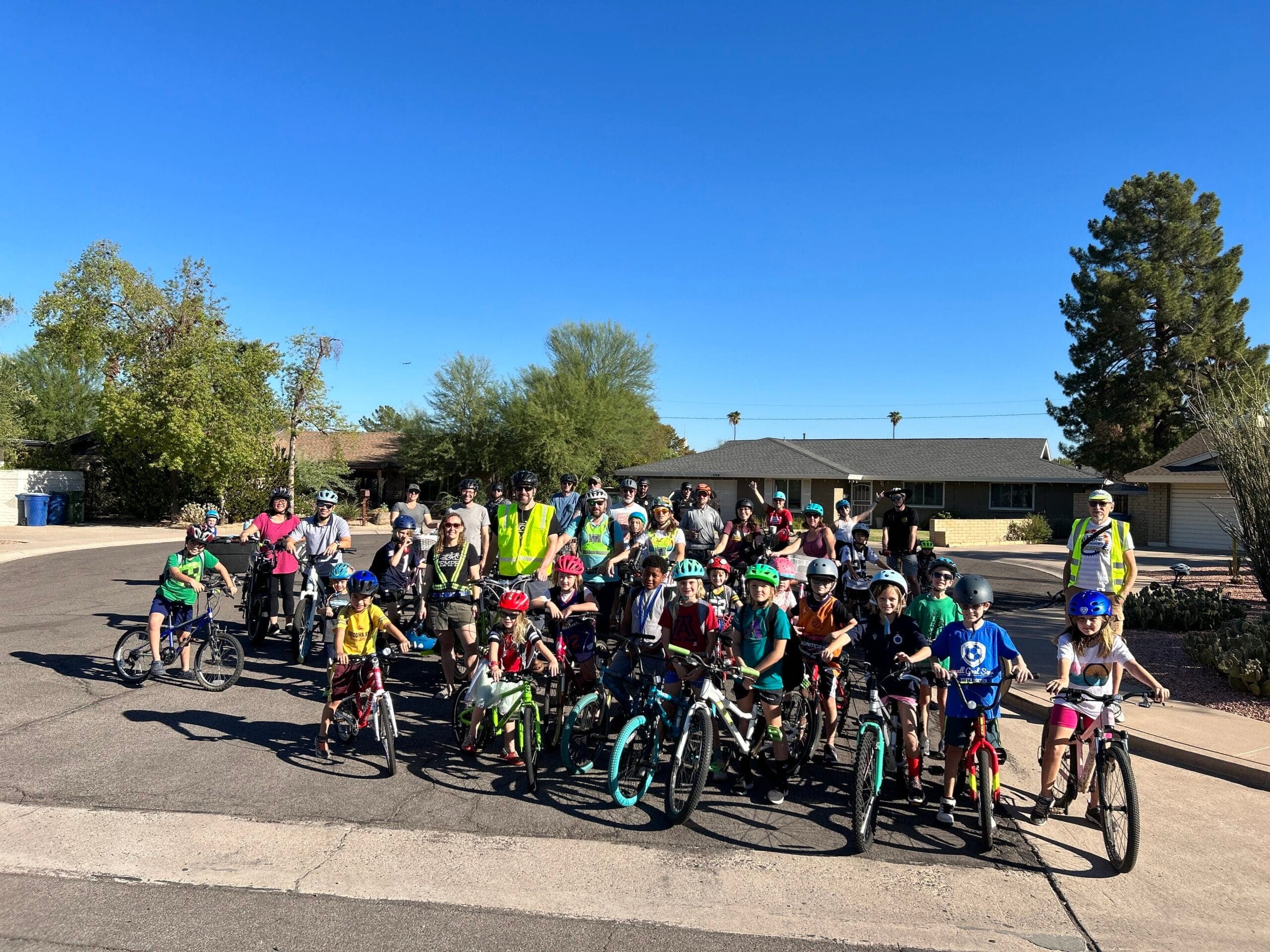
News
By Guest Contributor, June 11, 2024
This case study was written as part of our Dangerous by Design Technical Assistance program. This initiative brought together champions from across the country to advance street safety efforts through data collection and storytelling. This study was written by Hannah Moulton Belec from Tempe Bicycle Action Group.

On March 29, 2024, a 15-year-old high school student was hit and injured by a driver while biking home from school because she had no safe way to cross McClintock Drive, a busy arterial. There was also a bicyclist fatality on College Avenue and Alameda in February 2023. College Avenue is a designated bike boulevard, but features little infrastructure to calm speeds or discourage cut-through traffic. These are two examples of the ways Tempe is failing to support its growing community of people who need and want to use bikes as a primary mode of transportation.
Background
Tempe is part college town, part suburb with a small-town feel, located in the Phoenix metro area. Tempe doesn’t have much in the way of bike-pedestrian infrastructure, and struggles with school funding for things like bus routes similarly to many places across Arizona.
Rural Road and Baseline Road is the most dangerous intersection in Tempe. It has seen five fatalities in recent years. This area borders multi-use housing and retail development and is within a half mile of the US 60 freeway. This area of town is a border between the more dense northern part of Tempe and a more spread out south Tempe. The road is eight lanes across going east-west and eight going north-south. With just a few more safe crossings, this area could be connected to several bike paths to Kiwanis Park and to bike boulevards and other preferred routes to walk, bike or roll between nearby housing and local businesses.
“Our city just voted on a General Plan for more density, better transit options and bike and pedestrian infrastructure. Now we need to really commit to connecting the dots to make Tempe a 20-minute city to access schools, local businesses and services. That means making our streets look and feel friendlier to non-vehicle travel. Or if not friendly, at least not terrifying. The solutions to this, in my opinion, are not in enforcement—or certainly not in enforcement alone. They are in engineering.” -Hannah Moulton Belec
Cofounder, Broadmor Bike Bus
Taking Action
The founders of the Broadmor Bike Bus want to establish a broader Safe Routes effort to address the safety concerns at these locations and more: Safe Routes to School, Safe Routes to Shopping, and Safe Routes to Services. With the Bike Bus spreading to other schools in the district, the momentum is growing to build out the routes. The expanded Safe Routes project will prioritize connecting bike and pedestrian routes to local businesses and human services by hosting group rides to shopping and services and improving the infrastructure on these routes. This includes installing more HAWK beacon crossings, leading pedestrian signals along designated bike boulevards, separated bike lanes, adaptive streets interventions and pedestrian islands. One of the businesses at the dangerous intersection of Rural Road and US 60 has already agreed to be part of this Safe Routes initiative.

The coalition developing the Safe Routes includes the Tempe Bicycle Action Group, Bike Saviours, the Broadmor PTA, and leaders in the Tempe Police Department. The team has received grant support from the Ruby Bridges Foundation and People for Bikes. The City of Tempe had previously piloted candlesticks on three sections of College Avenue along the route of the Broadmor Bike Bus, launched an adaptive streets bike lane mural, and changed a signal to give pedestrians and bikes the green light before vehicles. This campaign will support and expand on the city’s work.


Related News

© 2025 Smart Growth America. All rights reserved
Site By3Lane Marketing
























